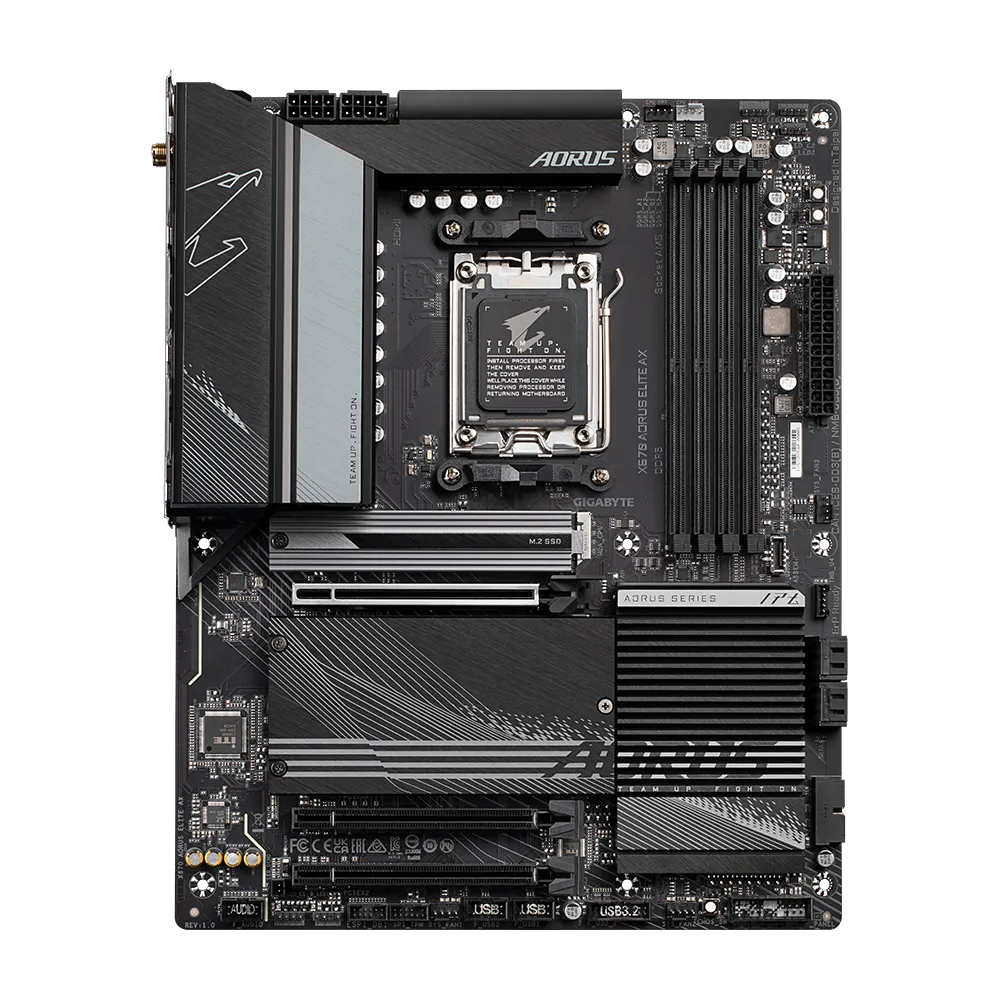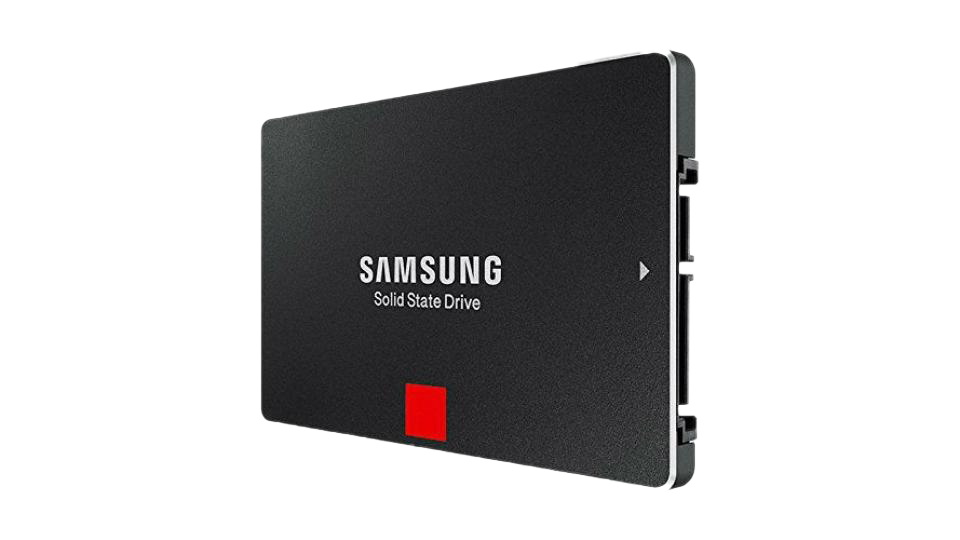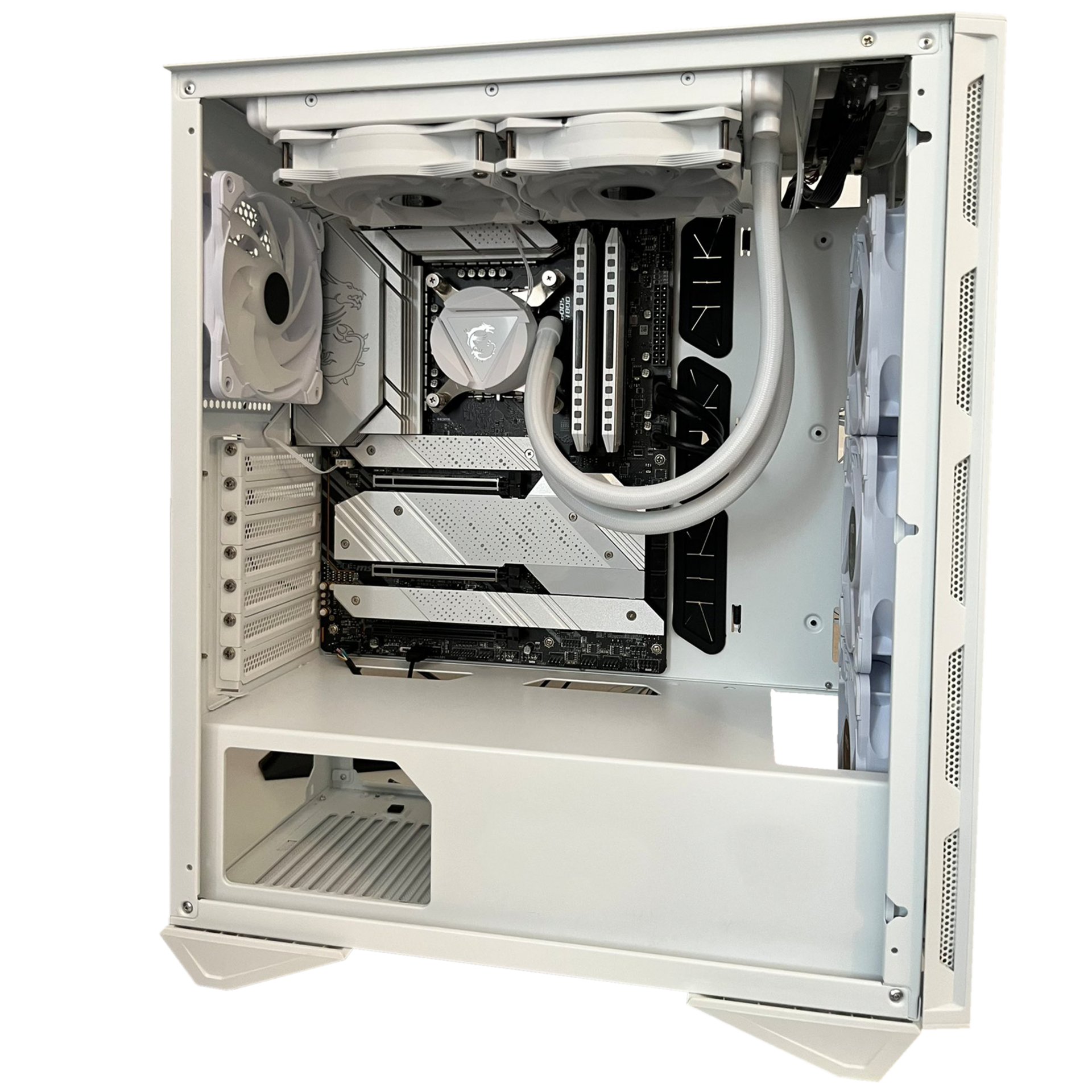
What is a Motherboard?
A motherboard, or mainboard, is the central component in a computer system, connecting and coordinating all other hardware. It houses the CPU socket, RAM slots, expansion slots, storage connectors, and power connectors, with different sizes called form factors like ATX or Mini-ITX.
Key Components of a Motherboard
The motherboard's key components include the CPU socket, RAM slots, expansion slots, storage connectors, power connectors, and ports. These elements facilitate the connection and functioning of the CPU, RAM, peripherals, storage devices, and external devices.
Buying Considerations
When buying a motherboard, ensure compatibility with your CPU, RAM, and other components. Consider your usage needs, expansion options, connectivity, overclocking support, brand reputation, and budget. Prioritize features according to your requirements to make an informed decision for your PC build or upgrade.

What is a Processor?
A processor, also known as a CPU (Central Processing Unit), is the brain of a computer, responsible for executing instructions and performing calculations. It interprets and carries out tasks requested by software, making it a critical component in any computing device.
Key Components of a Processor
The key components of a processor include the cores, cache memory, clock speed, and instruction set architecture. Cores are individual processing units within the CPU, allowing it to handle multiple tasks simultaneously. Cache memory stores frequently accessed data for quick retrieval, enhancing performance. Clock speed, measured in gigahertz (GHz), determines how quickly the processor can execute instructions. Instruction set architecture defines the set of instructions the CPU can understand and execute.
Buying Considerations
When buying a processor, consider factors such as performance requirements, budget, compatibility with the motherboard, and intended usage. Evaluate the number of cores and clock speed based on your multitasking needs and the demands of the software you'll be using. Check benchmarks and reviews to gauge real-world performance, and ensure compatibility with your motherboard's CPU socket. Consider future upgrade options and the CPU's power efficiency to make an informed decision for your computing needs.

What is a Graphics Card?
A graphics card, also known as a GPU (Graphics Processing Unit), is a specialized component responsible for rendering images and graphics on a computer display. It accelerates the rendering of 3D images, videos, and animations, enhancing visual performance in gaming, design, video editing, and other graphical tasks.
Key Components of a Graphics Card
The key components of a graphics card include the GPU chip, VRAM (Video Random Access Memory), cooling system, and interface connectors. The GPU chip performs the actual rendering of images and graphics, while VRAM stores the textures and frame buffers needed for rendering. The cooling system, typically consisting of fans and heat sinks, dissipates heat generated by the GPU to maintain optimal performance. Interface connectors such as HDMI, DisplayPort, and DVI allow the graphics card to connect to the display monitor.
Buying Considerations
When buying a graphics card, consider factors such as performance requirements, budget, compatibility with the motherboard and power supply, and intended usage. Evaluate the GPU's architecture, core count, clock speed, and VRAM capacity based on your gaming or graphical workload. Check benchmarks and reviews to assess real-world performance and reliability. Ensure compatibility with your motherboard's PCIe slots and power supply connectors. Consider future upgrade options and the graphics card's power efficiency to make an informed decision for your gaming or graphical needs.

What is a Storage?
Storage in computing refers to the medium where data, files, and applications are stored for later retrieval and use. It encompasses various types of devices such as hard disk drives (HDDs), solid-state drives (SSDs), and optical drives, providing different capacities, speeds, and reliability levels to meet diverse storage needs.
Key Components of a Storage
The key components of storage devices include the storage medium (platters in HDDs or NAND flash memory in SSDs), controller, interface, and form factor. The storage medium stores data in binary form, while the controller manages data access and storage operations, optimizing performance and reliability. The interface (e.g., SATA, NVMe) connects the storage device to the motherboard, determining data transfer speeds. The form factor defines the physical size and shape of the storage device, influencing compatibility and installation options.
Buying Considerations
When buying storage devices, consider factors such as capacity requirements, performance needs, reliability, budget, and compatibility with your system. Evaluate the type of storage medium (HDD or SSD) based on your speed and durability preferences. Assess the storage device's capacity and interface compatibility with your motherboard and other hardware components. Consider factors like read/write speeds, endurance, and warranty to ensure optimal performance and reliability. Balance cost and performance to select the storage solution that best meets your storage needs and budget constraints.

What is a Memory (RAM)?
Memory, commonly referred to as RAM (Random Access Memory), is a vital component in a computer system responsible for temporarily storing data that the CPU needs to access quickly. It allows the processor to retrieve and manipulate data rapidly, enhancing system performance and responsiveness during multitasking, gaming, and other computing tasks.
Key Components of a Memory
The key components of RAM include memory modules (DIMMs), memory chips, capacity, speed, and latency. Memory modules, typically in the form of DIMMs (Dual In-Line Memory Modules), house memory chips organized into rows and columns. These memory chips store data in binary form, allowing rapid access by the CPU. Capacity refers to the amount of data that can be stored in RAM, measured in gigabytes (GB) or terabytes (TB). Speed, measured in megahertz (MHz) or gigahertz (GHz), determines how quickly data can be accessed and transferred between the CPU and RAM. Latency, measured in nanoseconds (ns) or clock cycles, represents the delay between the CPU requesting data and the RAM responding.
Buying Considerations
When buying RAM, consider factors such as capacity, speed, latency, compatibility, and budget. Assess your multitasking needs and the memory requirements of the applications you use to determine the appropriate capacity. Choose RAM modules with sufficient speed and low latency to ensure optimal performance, particularly for gaming and high-performance computing tasks. Check compatibility with your motherboard, ensuring the RAM modules match the type (e.g., DDR4, DDR5) and speed supported by your system. Consider reputable brands known for reliability and performance, and balance cost and performance to select the RAM that best meets your needs and budget.

What is a Power Supply Unit (PSU)?
A Power Supply Unit (PSU) is a vital component in a computer system, converting AC power from the electrical outlet into the DC power needed by internal components. It provides stable and reliable power to the motherboard, CPU, graphics card, storage devices, and peripherals, ensuring proper functionality.
Key Components of a Power Supply Unit (PSU)
Key components include the input power connector, transformer, rectifier, filter capacitors, voltage regulators, and output connectors. The input connector receives AC power, which the transformer converts to suitable voltages. The rectifier then converts AC to DC power, while capacitors smooth voltage fluctuations. Voltage regulators maintain stable output voltages, and output connectors supply power to various components.
Buying Considerations
Consider factors such as wattage, efficiency rating, form factor, modular design, and reliability when buying a PSU. Ensure it has sufficient wattage for your system's needs with room for upgrades. Choose a high-efficiency PSU to minimize energy waste and lower electricity bills. Check compatibility with your PC case, and opt for a modular design for easier cable management. Select a reputable brand known for reliability and read reviews for performance feedback. Investing in a quality PSU ensures stable operation and protects your components.

What is a Computer Case and Cooler?
A computer case serves as the housing for internal components, providing structural support, organization, and airflow. It includes the chassis, side panels, front panel, drive bays, expansion slots, and cable management features.
A cooler is a device that dissipates heat from components to prevent overheating. It can refer to CPU coolers, GPU coolers, or case fans.
Key Components
For a computer case, key components include the chassis, drive bays, expansion slots, and cable management features. In the context of cooling, key components may include heatsinks, heat pipes, fans, and radiators.
Buying Considerations
When buying a computer case, consider factors like size, form factor compatibility, airflow, cooling options, expansion slots, and aesthetics. For cooling components, evaluate cooling performance, noise level, compatibility, and budget to ensure effective heat dissipation without compromising system stability.

What is an Operating System?
An operating system (OS) is software that manages computer hardware and provides services for computer programs. It acts as an intermediary between the user and the computer hardware, facilitating tasks such as file management, memory management, process scheduling, and user interface interaction.
Key Components of Operating System
Key components of an operating system include the kernel, which manages hardware resources and provides essential services; device drivers, which allow the OS to communicate with hardware devices; file system, which organizes and stores data on storage devices; and user interface, which allows users to interact with the system through graphical or command-line interfaces.
Choosing Considerations
Operating systems are typically pre-installed on new computers, but if you're building your own system or upgrading, you'll need to purchase one separately. Consider factors such as compatibility with your hardware, software requirements, user interface preferences, and support options. Popular operating systems include Windows, macOS, and various flavors of Linux. Evaluate your needs and preferences to choose the operating system that best suits your computing tasks and workflow. Additionally, consider factors such as security features, software availability, and long-term support when making your decision.
Building Your Own PC: A Step-by-Step Tutorial
- Choose your components based on your budget, performance needs, and compatibility requirements.
- Prepare your workspace with adequate lighting and a clean, static-free surface.
- Install the CPU into the motherboard, following manufacturer instructions and applying thermal paste if necessary.
- Mount the motherboard into the case, ensuring proper alignment with standoff screws.
- Install the RAM modules into the motherboard's DIMM slots, applying gentle pressure until they click into place.
- Connect the power supply unit (PSU) to the motherboard, CPU, graphics card, and storage devices using appropriate cables.
- Install the graphics card into the PCIe slot on the motherboard and secure it with screws if necessary.
- Mount the storage devices (HDDs, SSDs) into the drive bays or mounting brackets within the case.
- Connect case fans, front panel connectors, and other peripherals to the motherboard.
- Double-check all connections and ensure everything is properly seated and secured.
- Close the case and connect peripherals such as monitor, keyboard, and mouse.
- Power on the PC and follow the BIOS setup instructions to configure boot devices and settings.
- Install the operating system (OS) and necessary drivers once the BIOS setup is complete.
- Test the system for stability and functionality by running stress tests and benchmarking tools.
- Cable manage the interior of the case for improved airflow and aesthetics.
- Congratulations! You've successfully built your own PC.